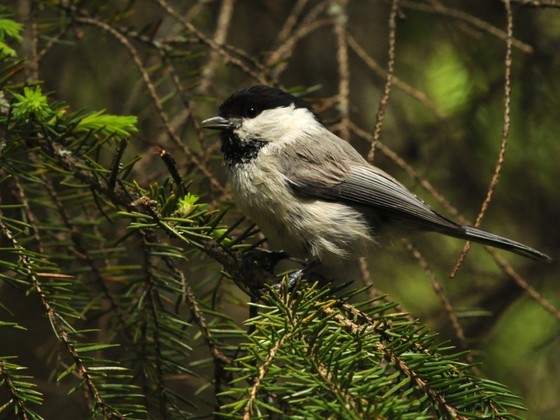Common bird populations are responding to climate change in a similarly pronounced way in both Europe and the USA. This has been confirmed in a study conducted by an international team of researchers, published by the prestigious journal Science. Populations of species predicted to have been favoured by changes in climate had substantially outperformed those expected to have been disadvantaged, the scientists said. The research was led by experts from Durham University, UK, with the participation of Czech researchers from the UP Faculty of Science, the Czech Society for Ornithology, and the Faculty of Science, Charles University in Prague.
Their analyses of data on bird populations over a 30-year period from 1980 to 2010 is the first real demonstration that climate is having a similarly large-scale influence on the abundance of common birds in both continents. Among the species showing pronounced effects of climate change are common woodland and garden birds such as the wren (Troglodytes troglodytes) in Europe, and the American robin (Turdus migratorius) in the USA. The study authors collected data on population trends in 145 common bird species in Europe and 380 common bird species in the USA. They characterised the climates favoured by different bird species to find out if recent changes in climate should have positively or negatively affected common breeding birds.
“We found a clear difference in the average population trends of bird species either advantaged or disadvantaged by climate change. For example, populations of the European bee-eater (Merops apiaster) or Cetti’s warbler (Cettia cetti), species with a southerly distribution in Europe, have increased in recent years, whilst more northerly distributed species such as the willow tit (Parus montanus) and the brambling (also known as the mountain finch, Fringilla montifringilla) have been declining in the same period,” said one of the authors and the coordinator of the Pan European Common Bird Monitoring Scheme, Petr Voříšek from the UP Department of Zoology and Laboratory of Ornithology and the Czech Society for Ornithology.
Differences in population trends due to changes in climate can also be seen within the same species of bird across different geographical areas: for example, in Europe, species such as the wren have been increasing in northern areas where winters are becoming milder, but declining in some southern countries where summers have been getting hotter and drier. Similarly, the American robin has declined in some southern states such as Mississippi and Louisiana, but increased in north-central states, such as the Dakotas.
Other factors that may affect the monitored increase and decrease in bird populations, such as the size of the birds, the habitats they live in, and their migratory behaviour, were also considered by the authors in their analyses. All these factors do affect bird populations, but their impact does not differ systematically between groups advantaged or disadvantaged by climate change. Therefore, only climate change could explain the differences between average population trends in both groups, the researchers said.
Dr Philip Stephens from Durham University, one of the two lead authors of the study, said, “If there was no impact of climate change, you would expect the average population trend of species in the two groups to be the same, but the differences expose the fact that recent climate change has already favoured one set of species over another.”
Dr John Sauer from the U.S. Geological Survey research team appreciated the high-quality data sets. “We are fortunate to have a rich trove of information in the North American Breeding Bird Survey, dating back to 1966, and its European counterpart,” he said
According to Petr Voříšek, the study has repeatedly confirmed the huge significance of citizen-science projects. “It’s been shown that today, in the era of top-notch technologies, enthusiasts equipped with mere binoculars, a notepad, and a knowledge of birds may bring in findings crucial for science and environmental protection.”
The study was only made possible by the dedication of thousands of volunteers – amateur ornithologists – who survey birds using the same rigorous methods every year. This huge effort is co-ordinated by the European Bird Census Council by means of the Pan-European Common Bird Monitoring Scheme and by U.S. Geological Survey in the United States.
